- About MAA
- Membership
- MAA Publications
- Periodicals
- Blogs
- MAA Book Series
- MAA Press (an imprint of the AMS)
- MAA Notes
- MAA Reviews
- Mathematical Communication
- Information for Libraries
- Author Resources
- Advertise with MAA
- Meetings
- Competitions
- Programs
- Communities
- MAA Sections
- SIGMAA
- MAA Connect
- Students
- MAA Awards
- Awards Booklets
- Writing Awards
- Teaching Awards
- Service Awards
- Research Awards
- Lecture Awards
- Putnam Competition Individual and Team Winners
- D. E. Shaw Group AMC 8 Awards & Certificates
- Maryam Mirzakhani AMC 10 A Awards & Certificates
- Two Sigma AMC 10 B Awards & Certificates
- Jane Street AMC 12 A Awards & Certificates
- Akamai AMC 12 B Awards & Certificates
- High School Teachers
- News
You are here
Who's That Mathematician? Paul R. Halmos Collection - Page 51
For more information about Paul R. Halmos (1916-2006) and about the Paul R. Halmos Photograph Collection, please see the introduction to this article on page 1. A new page featuring six photographs will be posted at the start of each week during 2012 and early 2013.
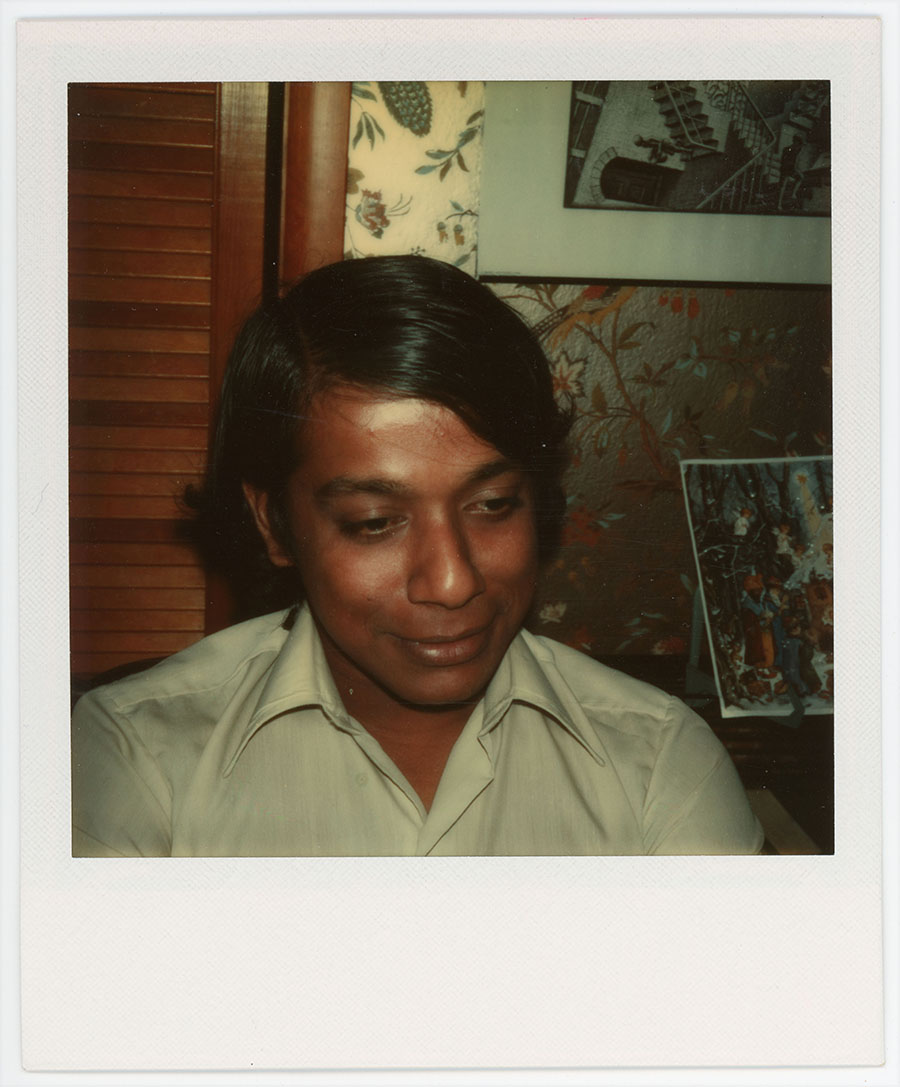
Halmos photographed his Ph.D. student Viakalathur Shankar Sunder on November 22, 1973 in Bloomington, Indiana. Sunder earned his Ph.D. in 1977 from the University of Indiana with the dissertation “Characterization Theorems for Integral Operators.” In his book, I Want to Be a Mathematician: An Automathography (Springer 1985), Halmos fondly recalled Sunder’s thesis work during 1975–1977 and their collaboration on the book, Bounded Integral Operators on L2 Spaces (Springer 1978), which contained results from Sunder’s dissertation:
Sunder came to Santa Barbara with me and finished his thesis there. He got some beautiful results …. He put compactness back into the theory of integral operators …. He answered so many questions that my book would have been incomplete without his results …. [The] solution was to ask him to collaborate with me on the book …. (p. 371)
A few years later, Sunder changed his research focus to operator algebras. After serving on the faculty of the Indian Statistical Institute in Delhi and Bangalore for over ten years, he moved in 1995 to the Institute of Mathematical Sciences in Chennai, where he continues to work on operator algebras and, in particular, on subfactors. He co-authored the book, Introduction to Subfactors, with Vaughan Jones (for a photograph of Jones, see page 25 of this collection, where you can read more about him) in 1997. (Sources: Mathematics Genealogy Project, Indian National Science Academy biography)
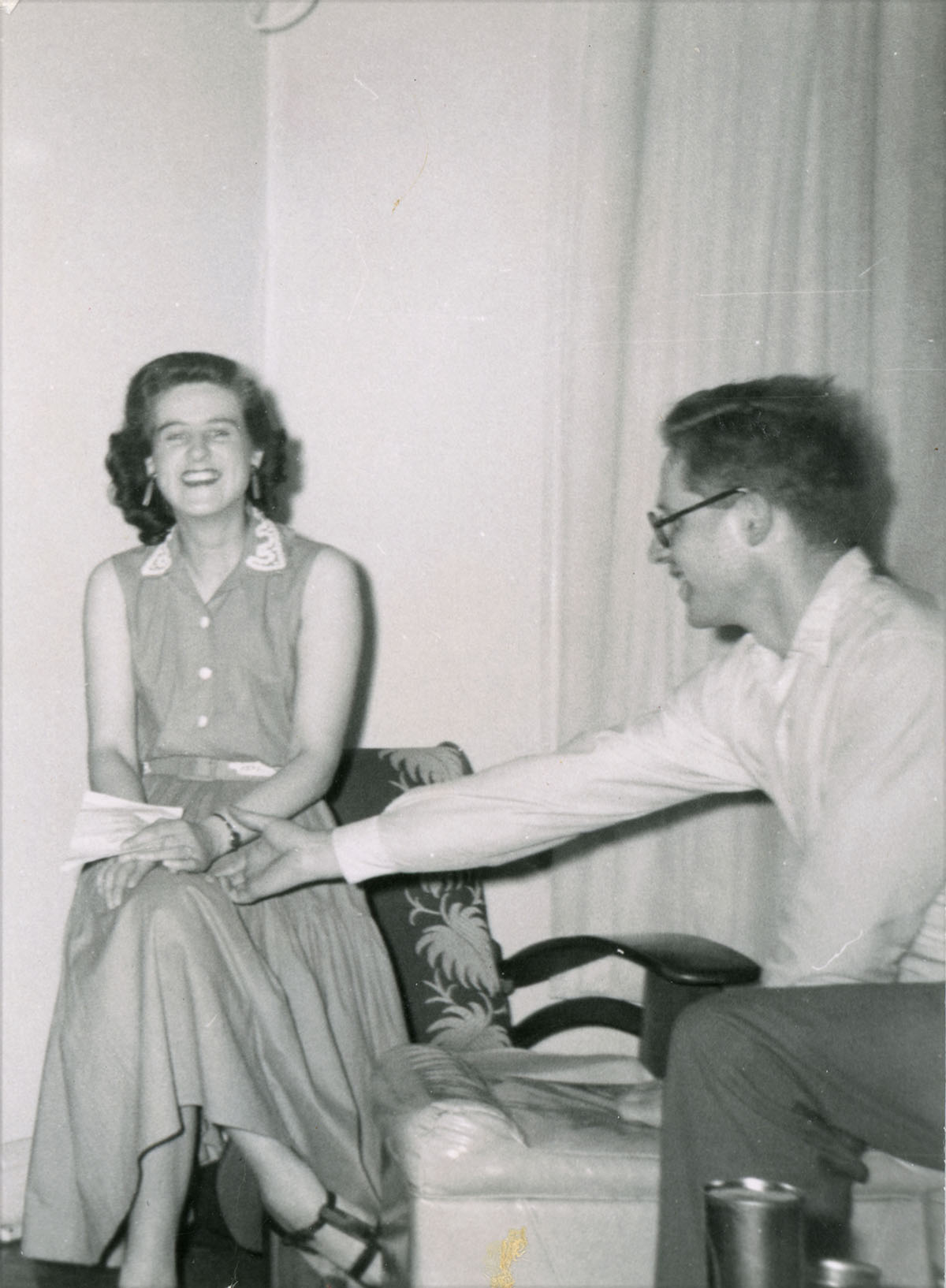
Rhona Cockcroft and H.P.F. Swinnerton-Dyer were photographed by Halmos in about 1955 in Chicago.
Rhona Cockcroft was the wife of topologist Wilfred Halliday “Bill” Cockcroft (1923-1999), who was on the faculties of the universities of Aberdeen, Southampton, Hull, and Ulster, and who from 1978 to 1982 led a well-known study of mathematics teaching in British schools. (Sources: Wilfred Halliday Cockcroft obituary, Hull University Archives)
Number theorist Sir Peter Swinnerton-Dyer (1927-2018) completed his doctoral work with J. E. Littlewood (for a photograph of Littlewood, see page 31 of this collection where you can read more about him) and André Weil. Best known for the Birch and Swinnerton-Dyer Conjecture, which in 2000 became one of the Clay Mathematics Institute’s seven Millennium Prize Problems, he has spent most of his career at Cambridge University, where he is now Emeritus Professor in the Department of Pure Mathematics and Mathematical Statistics. (Sources: Mathematics Genealogy Project, Clay Mathematics Institute, Cambridge University Mathematics)
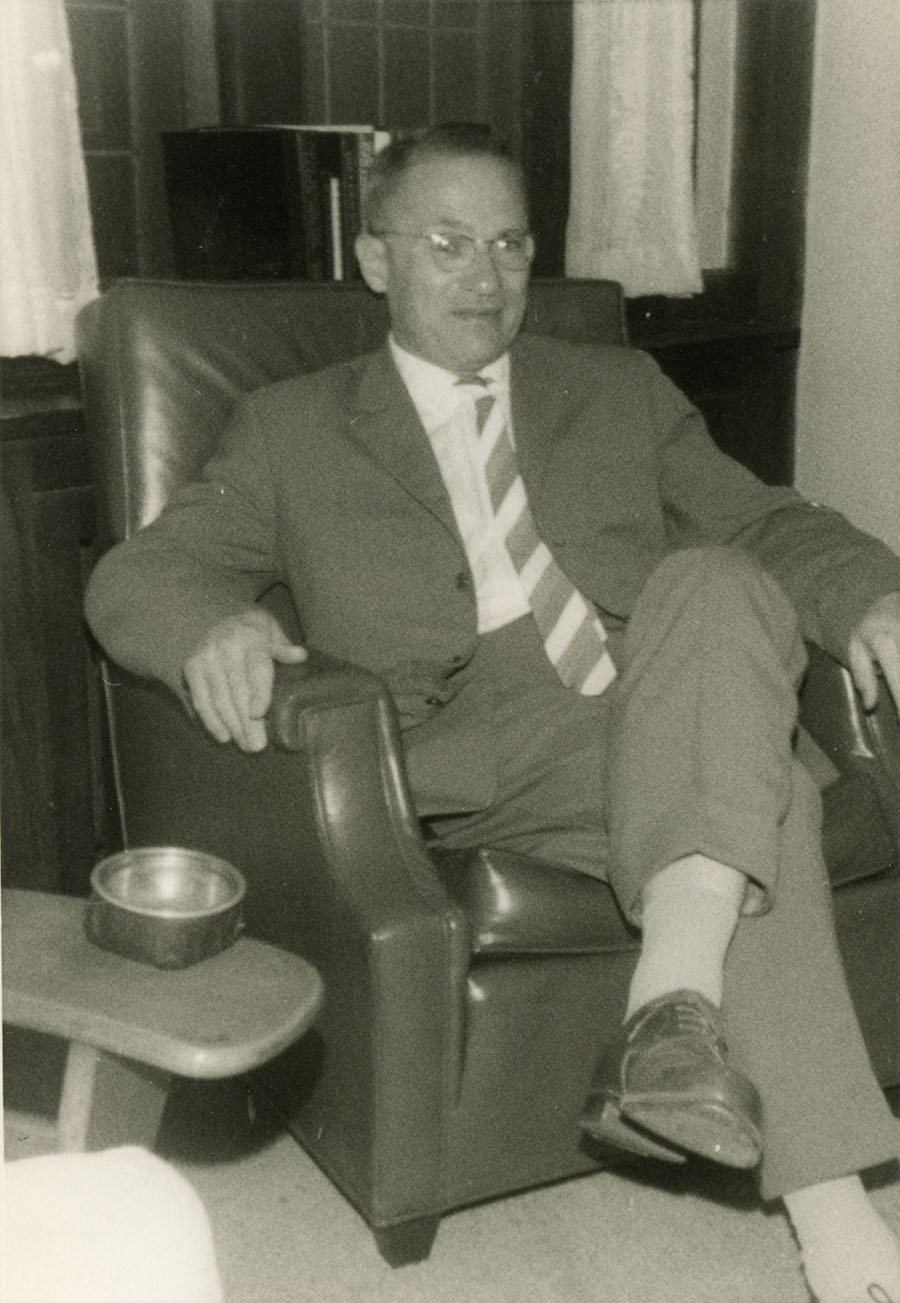
Halmos photographed Béla Szőkefalvi-Nagy (1913-1998) in August of 1961. Photographs of Szőkefalvi-Nagy appear on page 9 and page 14 of this collection, where you can read more about him, with additional photos on pages 36, 38, 43, and 50.
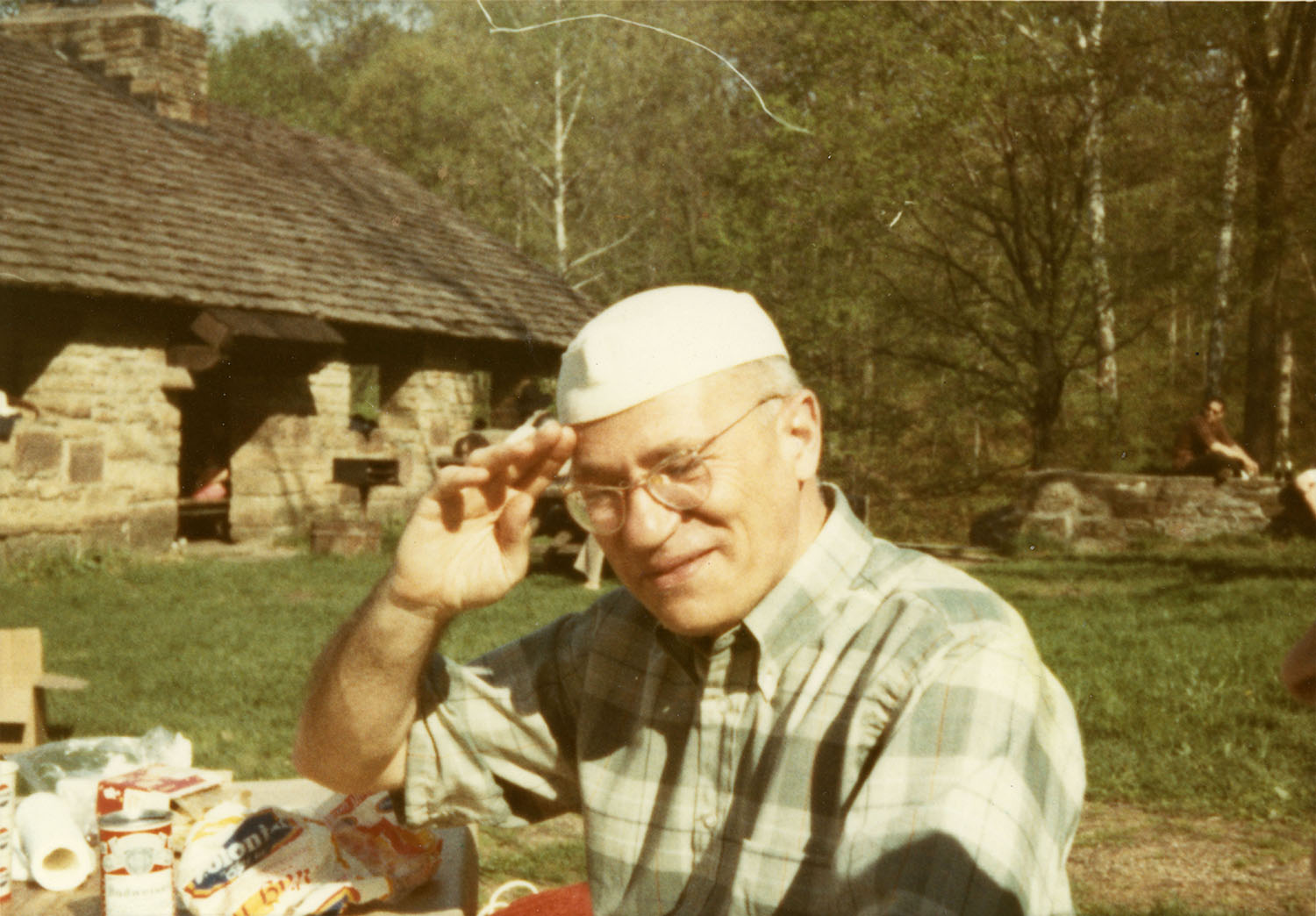
Béla Szőkefalvi-Nagy (1913-1998) was photographed by Halmos again in May of 1970 in Bloomington, Indiana.
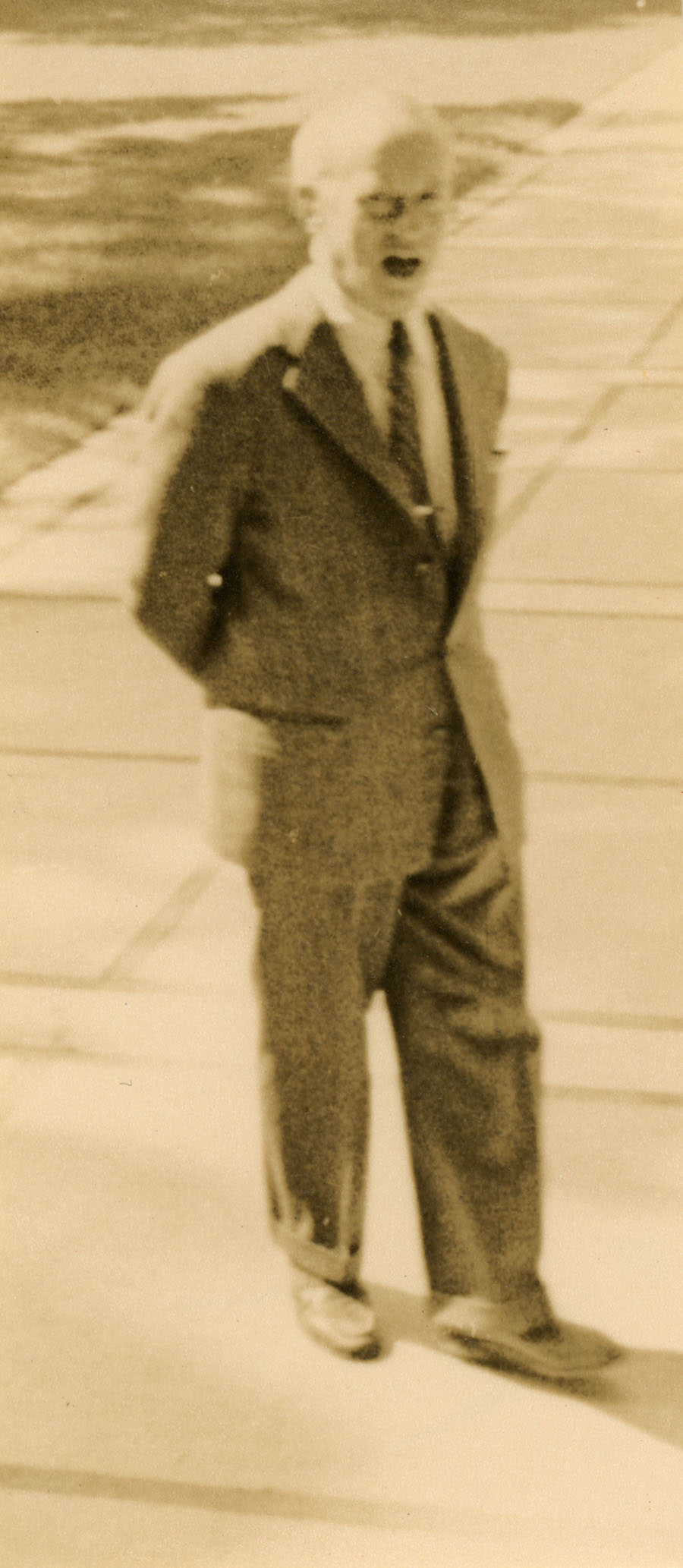
Halmos photographed Alfred Tarski (1902-1983) in 1959. Tarski was at the Institute for Advanced Study (IAS) during 1941-42, as was Halmos, and it is likely that the two first met there. Born in Warsaw when it was still under Russian control, Tarski earned his doctorate at the University of Warsaw in 1924 under logician Stanislaw Lesniewski. He was attending a meeting at Harvard in the U.S. on September 1, 1939, when Hitler’s army invaded Poland, and was able to stay on at Harvard (1939-1941), and then at IAS, and, finally, at the University of California, Berkeley, from 1942 onward. According to O’Connor and Robertson of the MacTutor Archive:
Tarski is recognised as one of the four greatest logicians of all time, the other three being Aristotle, [Gottlob] Frege, and [Kurt] Gödel. Of these Tarski was the most prolific as a logician and his collected works, excluding his books, runs to 2500 pages. Tarski made important contributions in many areas of mathematics: set theory, measure theory, topology, geometry, classical and universal algebra, algebraic logic, various branches of formal logic and metamathematics. … He can be considered a mathematical logician with exceptionally broad mathematical interests.
Tarski advised at least 26 Ph.D. students, all but three of them at UC Berkeley. (Sources: MacTutor Archive, Mathematics Genealogy Project, IAS)
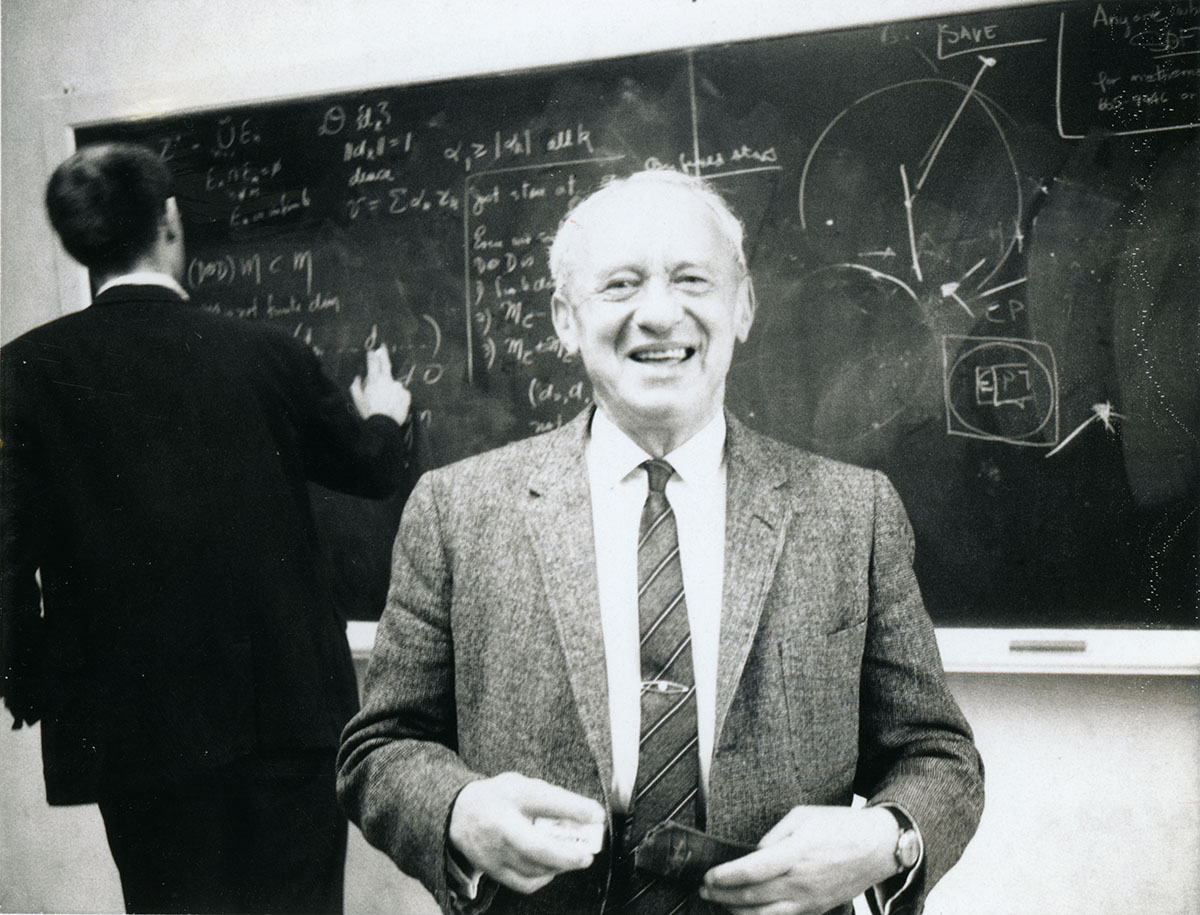
Halmos photographed Alfred Tarski again on May 11, 1967, in a classroom at the University of Michigan. That’s Ron Douglas at the chalkboard. For another photo of Douglas, see page 13 of this collection, where you can read more about him.
For an introduction to this article and to the Paul R. Halmos Photograph Collection, please see page 1. Watch for a new page featuring six new photographs each week during 2012.
Regarding sources for this page: Information for which a source is not given either appeared on the reverse side of the photograph or was obtained from various sources during 2011-12 by archivist Carol Mead of the Archives of American Mathematics, Dolph Briscoe Center for American History, University of Texas, Austin.
Janet Beery (University of Redlands) and Carol Mead (Archives of American Mathematics, University of Texas, Austin), "Who's That Mathematician? Paul R. Halmos Collection - Page 51," Convergence (June 2013), DOI:10.4169/loci003801




